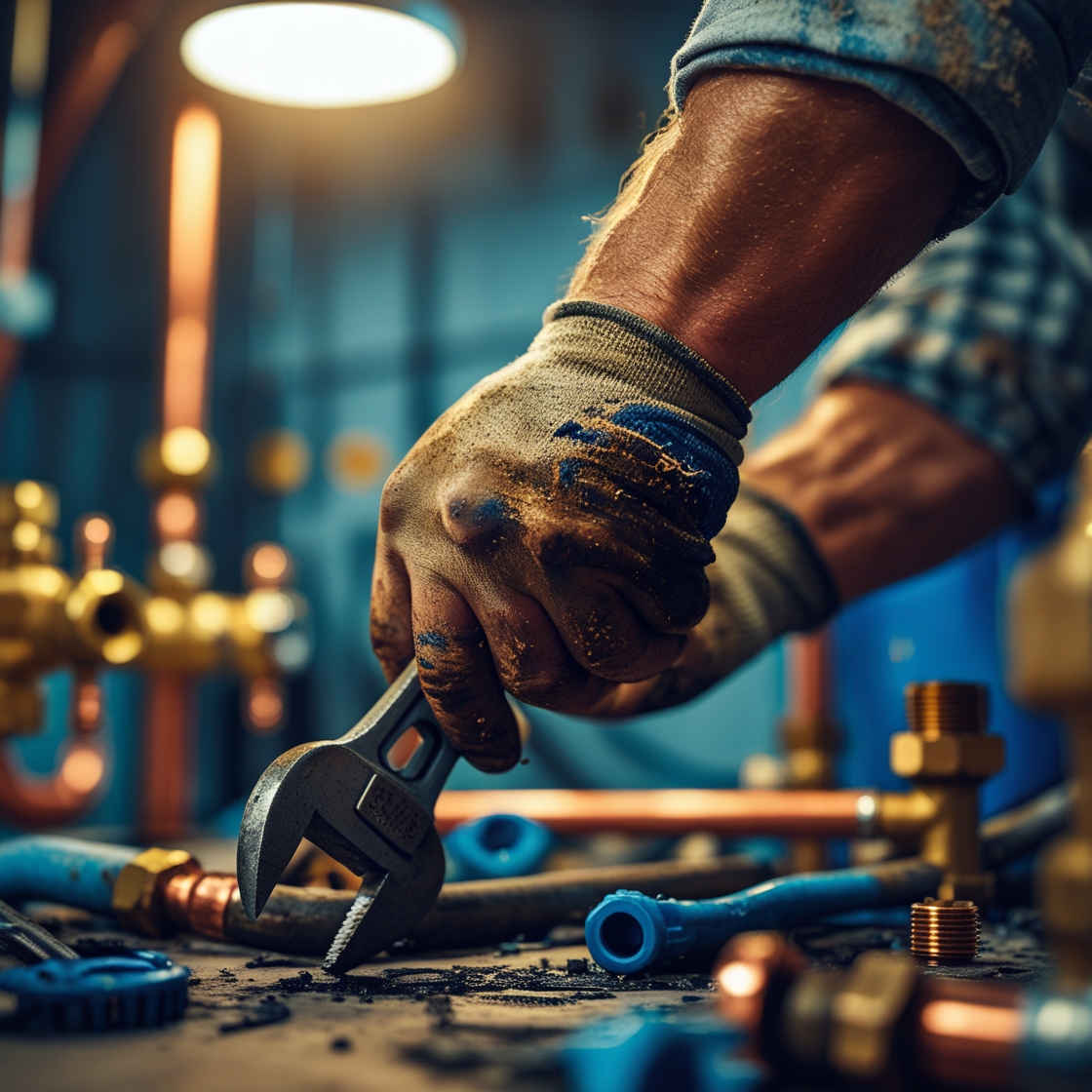Protect Your Home from the Ground Up
When most homeowners think about maintaining their property, they picture roof repairs, HVAC tune-ups, or repainting. But there’s one part of the home that’s often forgotten—and yet, it can cause some of the most expensive damage if ignored: the sewer system.
Knowing how often to get a sewer inspection is key to preventing blockages, leaks, and unexpected plumbing disasters. In Los Angeles, where homes often sit on aging or tree-root-invaded sewer lines, routine camera inspections are one of the smartest maintenance investments you can make.
At The Pine Plumbing, we perform professional sewer camera inspections across Los Angeles to help homeowners detect early warning signs before they turn into costly emergencies.
So, how often should you schedule one? Let’s break it down—based on your property’s age, location, and plumbing usage.
1. Understanding What a Sewer Camera Inspection Is
Before we talk about frequency, it’s important to know what a sewer camera inspection actually does.
A sewer camera inspection is a non-invasive diagnostic test that uses a high-resolution camera attached to a flexible cable. The camera is inserted through a cleanout access point and travels through your sewer line, giving plumbers a live view of what’s happening inside.
The inspection can reveal:
- Cracks, corrosion, or pipe collapse.
- Tree root intrusion.
- Grease or mineral buildup.
- Sagging or misaligned pipe joints.
- Signs of leakage or blockage.
This process usually takes less than an hour and provides a clear picture of your plumbing’s health, without any digging or mess.
2. Why Sewer Inspections Are So Important in Los Angeles
Los Angeles has a unique set of conditions that make routine sewer inspections essential.
Aging Infrastructure
Many neighborhoods in LA—like Silver Lake, Highland Park, and West Adams—still have homes built before the 1960s. These properties often rely on cast iron, clay, or Orangeburg pipes, which deteriorate over time.
Tree Root Intrusion
The city’s iconic greenery, from ficus to jacarandas, looks beautiful but can be destructive underground. Tree roots naturally seek moisture and can infiltrate even the smallest cracks in your sewer line.
Seismic Activity
Earthquakes and ground movement, common in Southern California, can cause pipe misalignments and slow leaks that go unnoticed until serious damage occurs.
Heavy Usage and Hard Water
Between multi-unit properties, high water usage, and mineral-heavy water supply, Los Angeles plumbing systems experience extra strain.
For these reasons, professional contractors and plumbing experts strongly recommend homeowners maintain a regular sewer inspection schedule to prevent expensive surprises.
3. How Often Sewer Inspections Should Be Done (General Guideline)
If you’re wondering how often to get a sewer inspection, here’s a basic guideline from our licensed plumbers at The Pine Plumbing:
| Property Type | Recommended Inspection Frequency | Notes |
|---|---|---|
| Newer Homes (0–10 years) | Every 3–5 years | Still, check if you have heavy tree coverage or frequent clogs. |
| Older Homes (10–30 years) | Every 2–3 years | Materials may start degrading; early detection prevents leaks. |
| Historic or Pre-1960s Homes | Annually | Older clay or cast iron lines are at higher risk for cracks and intrusion. |
| Rental / Multi-Unit Properties | Annually | Increased usage demands more frequent inspection. |
| After Major Earthquakes or Remodeling | Immediately | Ground shifts or new plumbing layouts can stress existing lines. |
These intervals are based on real-world plumbing maintenance schedules in the Los Angeles area, adjusted for local soil and usage patterns.
4. Signs You Need a Sewer Camera Inspection Sooner
Sometimes you can’t wait for your next scheduled inspection. If you notice any of the following warning signs, it’s time to call The Pine Plumbing right away:
a. Frequent Drain Clogs
If your sinks, tubs, or toilets keep backing up despite repeated snaking, there may be a deeper blockage in the main line.
b. Sewer Odor
A foul smell coming from drains or your yard could indicate a cracked or leaking sewer pipe.
c. Gurgling Sounds
Strange noises from drains or toilets often point to trapped air caused by partial blockages.
d. Lush or Soggy Spots in the Yard
An unexplained wet patch or greener area on your lawn can be a sign of underground leakage.
e. Older Home Without Recent Inspection
If you’ve recently moved into an older home and don’t know its inspection history, get one as soon as possible.
Even if your plumbing seems fine, a preventive camera inspection can reveal hidden issues before they lead to major damage.
5. How a Regular Plumbing Maintenance Schedule Saves You Money
Plumbing problems rarely start overnight. They build up slowly—tiny cracks, root invasions, mineral deposits—and by the time symptoms appear, repairs can cost thousands.
A consistent plumbing maintenance schedule, including sewer inspections, helps avoid:
- Emergency repair costs.
- Property damage (flooring, landscaping, foundation).
- Insurance claim disputes.
- Remodeling or construction delays.
In fact, many Los Angeles contractors make sewer inspections a standard requirement before remodels or property sales, because they know prevention is far cheaper than correction.
6. What Happens During a Sewer Camera Inspection
Here’s what you can expect when you schedule a sewer inspection with The Pine Plumbing:
- Preparation
Our technician locates your cleanout (usually near the property line or in the basement). - Camera Insertion
A flexible cable with a waterproof camera is fed into the sewer line. - Live Video Review
You’ll see a live feed of your sewer system, showing any buildup, cracks, or root intrusions. - Diagnosis and Report
We explain the findings and provide a video recording or written summary with recommendations.
The process is quick, clean, and requires no digging or demolition—making it an ideal part of your regular plumbing maintenance.
7. How Climate and Location Affect Sewer Inspection Frequency in LA
Not all Los Angeles neighborhoods face the same sewer challenges.
- Beverly Hills, Hancock Park, and Pasadena homes often have older clay lines.
- Coastal areas like Santa Monica experience salt corrosion from moist, salty air.
- Hilly neighborhoods face extra pressure on underground plumbing due to shifting soil.
If you live in any of these areas—or near large trees—it’s best to schedule annual or biennial inspections.
Meanwhile, newer developments in areas like Playa Vista or Downtown LA may get away with inspections every 3–5 years, provided the plumbing was installed with modern materials such as PVC or ABS.
8. The True Cost of Skipping Sewer Inspections
Some homeowners hesitate to schedule regular inspections because they assume, “If nothing seems wrong, why bother?” Unfortunately, waiting until you see symptoms can be a very costly mistake.
Here’s what can happen when you skip routine inspections:
- Unexpected Sewer Backup: Cleanup alone can cost $2,000–$6,000.
- Sewer Line Replacement: Depending on the damage, repairs may reach $5,000–$15,000.
- Property Damage: Sewage leaks can destroy floors, walls, and landscaping.
- Permit Delays: When remodeling, missing a sewer inspection can delay approvals or add fees.
For just a few hundred dollars, a camera inspection can prevent tens of thousands in damage.
9. Common Issues Discovered During Inspections
In Los Angeles, our team frequently finds these recurring problems during sewer camera inspections:
- Tree Root Intrusion – The most common culprit in older neighborhoods.
- Pipe Corrosion – Especially in cast iron systems.
- Grease and Debris Build-Up – Common in households with frequent cooking or laundry.
- Offset Joints – Soil shifting from minor quakes or poor installation.
- Collapsed or Bellied Pipes – Sections of the line sagging or broken.
By identifying these issues early, you can make small, planned repairs instead of facing a full replacement.
10. How Sewer Inspections Fit Into Your Plumbing Maintenance Schedule
A complete plumbing maintenance schedule for Los Angeles homeowners should include:
| Task | Frequency |
|---|---|
| Drain cleaning | Every 1–2 years |
| Water heater flush | Every 12 months |
| Sewer camera inspection | Every 2–3 years (annually for older homes) |
| Leak detection check | Annually |
| Fixture check (faucets, toilets) | Every 6–12 months |
Following this schedule ensures your home’s entire plumbing system stays efficient and problem-free.
11. Sewer Inspection Frequency for Businesses and Property Managers
For commercial buildings, apartment complexes, or rental properties, annual sewer inspections are a must.
Frequent tenant turnover and heavy water use create stress on the plumbing system. A single backup can affect multiple units, leading to legal liabilities and expensive restoration work.
Property managers across Los Angeles rely on The Pine Plumbing for scheduled inspections, because we provide detailed video documentation—perfect for maintenance records or insurance compliance.
12. When to Schedule an Inspection Immediately
Certain events or conditions should trigger an immediate sewer inspection, even if it’s outside your regular schedule:
- After major rainfall or flooding.
- Following earthquakes or ground shifts.
- Before buying or selling property.
- Before remodeling or adding bathrooms.
- After sewer backup or clog incidents.
This proactive step ensures you’re not overlooking damage that could worsen with time.
13. What Los Angeles Homeowners Say About Regular Sewer Inspections
“The Pine Plumbing saved us thousands. They found a crack in our sewer pipe during our annual inspection—before it caused a backup.”
— Lauren P., Glendale
“We live in an older home near Pasadena, and The Pine Plumbing does our camera inspections every year. The process is fast, and the peace of mind is worth every penny.”
— Michael T., Pasadena
Real homeowner experiences prove that preventive maintenance always pays off.
14. Choosing the Right Plumber for Sewer Camera Inspections
Not all plumbers use the same level of technology or experience. When choosing a sewer inspection company in Los Angeles, look for:
- Licensed and insured professionals.
- HD camera equipment with video recording.
- Transparent pricing with no upselling.
- Experience with trenchless repair methods (if issues are found).
- Strong reviews and local references.
At The Pine Plumbing, our inspections are performed by seasoned technicians who specialize in Los Angeles plumbing systems, from hillside homes to vintage properties.
15. Schedule Your Sewer Camera Inspection Today
Regular sewer inspections are one of the best forms of preventive home maintenance available.
They protect your property, your wallet, and your peace of mind.
Whether you’re maintaining your home, preparing for a remodel, or managing rental properties, The Pine Plumbing can create a personalized plumbing maintenance schedule tailored to your needs.
📞 Call The Pine Plumbing today to book your sewer camera inspection in Los Angeles.
Our expert plumbers will provide a clear video report, honest recommendations, and ensure your sewer system is in top shape for years to come.
Conclusion: Stay Ahead with Routine Sewer Inspections
If you’re asking how often to get a sewer inspection, the answer depends on your home’s age and usage—but in Los Angeles, every 2–3 years (or annually for older homes) is the smart choice.
Preventive inspections keep your sewer system flowing smoothly, your home protected, and your wallet safe from surprise repairs.
At The Pine Plumbing, we believe that the best plumbing service is one that prevents problems before they start. Schedule your inspection today and build your home maintenance plan with confidence.



